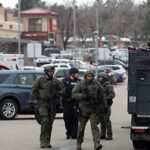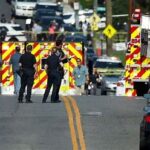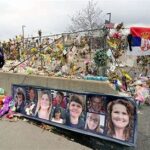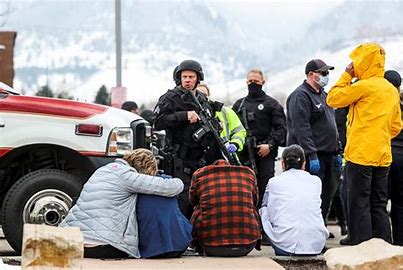Title: Understanding Mass Shootings in the United States: Causes, Consequences, and Solutions
Abstract:
Mass shootings represent a devastating and recurring phenomenon in the United States, with profound implications for public safety, mental health, and social cohesion. These tragic events, characterized by the indiscriminate use of firearms to inflict mass casualties, have sparked widespread debate and controversy surrounding gun control, mental health care, and societal factors contributing to violence. This essay provides a comprehensive analysis of mass shootings in the United States, examining their root causes, societal impacts, and policy responses. Drawing on empirical research, case studies, and expert perspectives, it explores the complex interplay of factors driving mass shootings, assesses the effectiveness of existing prevention strategies, and proposes evidence-based solutions to address this urgent public health crisis.
Introduction:
Mass shootings have emerged as a defining feature of American society, capturing headlines and igniting debates over gun violence, mental illness, and the adequacy of public safety measures. These tragic events, characterized by their indiscriminate and senseless nature, have left a trail of devastation in their wake, claiming innocent lives and shattering communities.

In the United States, where firearms are ubiquitous and gun ownership rights are enshrined in the Constitution, mass shootings have become a disturbingly common occurrence, prompting urgent calls for action to prevent future tragedies. This essay aims to provide a comprehensive examination of mass shootings in the United States, shedding light on the complex factors contributing to their occurrence, the impact on individuals and society, and the policy responses aimed at addressing this pressing public health crisis.
Understanding Mass Shootings:
Mass shootings are defined as incidents in which four or more people are killed or injured by gunfire in a public setting within a short period. While each mass shooting is unique, several common characteristics and patterns have emerged from extensive research and analysis. These include:
- Perpetrator Profile: Mass shooters often exhibit a combination of psychological distress, social isolation, and a history of interpersonal conflicts or grievances. While motivations vary, many perpetrators share common traits such as a desire for notoriety, revenge, or ideological extremism.
- Firearm Access: Easy access to firearms, particularly high-capacity weapons, facilitates the perpetration of mass shootings by enabling perpetrators to inflict maximum harm in a short amount of time. The prevalence of firearms in American society, coupled with lax gun laws and loopholes in background check systems, contributes to the proliferation of mass shootings.
- Social Contagion and Media Influence: Mass shootings can be influenced by social contagion, whereby media coverage of previous incidents inspires copycat attacks or glamorizes violence. Sensationalized reporting, graphic imagery, and the amplification of perpetrators’ manifestos contribute to the phenomenon of “media contagion” and may inadvertently fuel future acts of violence.

- Societal Factors: Mass shootings often occur within the broader context of societal factors such as social inequality, economic insecurity, and cultural norms that glorify violence and aggression. Issues related to mental health care, social alienation, and the erosion of community bonds also play a role in shaping the risk of mass shootings.
Impact of Mass Shootings:
The impact of mass shootings extends beyond the immediate loss of life and physical injuries, with profound consequences for individuals, communities, and the nation as a whole. Some of the key impacts include:
- Loss of Life and Trauma: Mass shootings result in the tragic loss of innocent lives and inflict physical injuries and psychological trauma on survivors, witnesses, and first responders. The long-term effects of trauma can manifest in post-traumatic stress disorder (PTSD), depression, anxiety, and other mental health disorders.
- Community Disruption: Mass shootings disrupt the fabric of communities, creating a climate of fear, distrust, and social fragmentation. Businesses, schools, and public spaces may be forced to close or implement security measures, further eroding the sense of safety and cohesion within affected neighborhoods.
- Economic Costs: Mass shootings impose significant economic costs on individuals, businesses, and governments, including medical expenses, loss of productivity, and expenditures related to law enforcement response and security enhancements. The long-term economic impact of mass shootings can extend to property values, tourism, and local economies.
- Psychological Impact: Mass shootings contribute to a sense of collective trauma and existential fear, leading to heightened anxiety, hypervigilance, and a sense of powerlessness among the general population. The normalization of violence in media and public discourse can exacerbate feelings of despair and desensitization to human suffering.

Policy Responses and Prevention Strategies:
Addressing the complex challenge of mass shootings requires a multifaceted approach that encompasses policy interventions, public health initiatives, and community-based strategies to prevent violence and promote safety. Some key policy responses and prevention strategies include:
- Gun Control Measures: Strengthening gun control laws and regulations to restrict access to firearms for individuals who pose a risk of violence, including universal background checks, waiting periods, and bans on high-capacity magazines and assault weapons. Implementing red flag laws to enable the temporary removal of firearms from individuals deemed to be a danger to themselves or others.
- Mental Health Support: Expanding access to mental health care services and early intervention programs to identify and treat individuals at risk of perpetrating violence. Integrating mental health screenings into routine healthcare settings and school-based interventions to address underlying issues such as trauma, substance abuse, and social isolation.
- Community-Based Interventions: Implementing community-based violence prevention programs that address the root causes of mass shootings, including poverty, social inequality, and lack of opportunity. Investing in youth development initiatives, job training programs, and violence interruption models that engage with at-risk individuals and promote positive alternatives to violence.
- Educational Initiatives: Promoting education and awareness initiatives to challenge stereotypes, dispel myths about mental illness, and teach conflict resolution skills and nonviolent communication strategies. Implementing school-based violence prevention programs that foster empathy, resilience, and social-emotional learning to create safer and more inclusive learning environments.

- Media Guidelines and Reporting Standards: Developing media guidelines and reporting standards for responsible coverage of mass shootings that prioritize accuracy, sensitivity, and ethical considerations. Limiting the use of perpetrators’ names and images, avoiding graphic depictions of violence, and providing context and analysis to help audiences understand the broader social and cultural factors contributing to mass shootings.
Conclusion:
Mass shootings represent a complex and multifaceted challenge that requires a coordinated and evidence-based response from policymakers, public health officials, law enforcement agencies, and community stakeholders. By addressing the underlying factors driving mass shootings, implementing preventive measures, and promoting a culture of safety, resilience, and empathy, the United States can work towards reducing the incidence of mass shootings and creating a society where every individual can live free from the threat of gun violence. While there are no easy solutions to this pressing public health crisis, concerted efforts to address the root causes of mass shootings and promote a culture of peace and understanding offer hope for a safer and more resilient future for all Americans.




